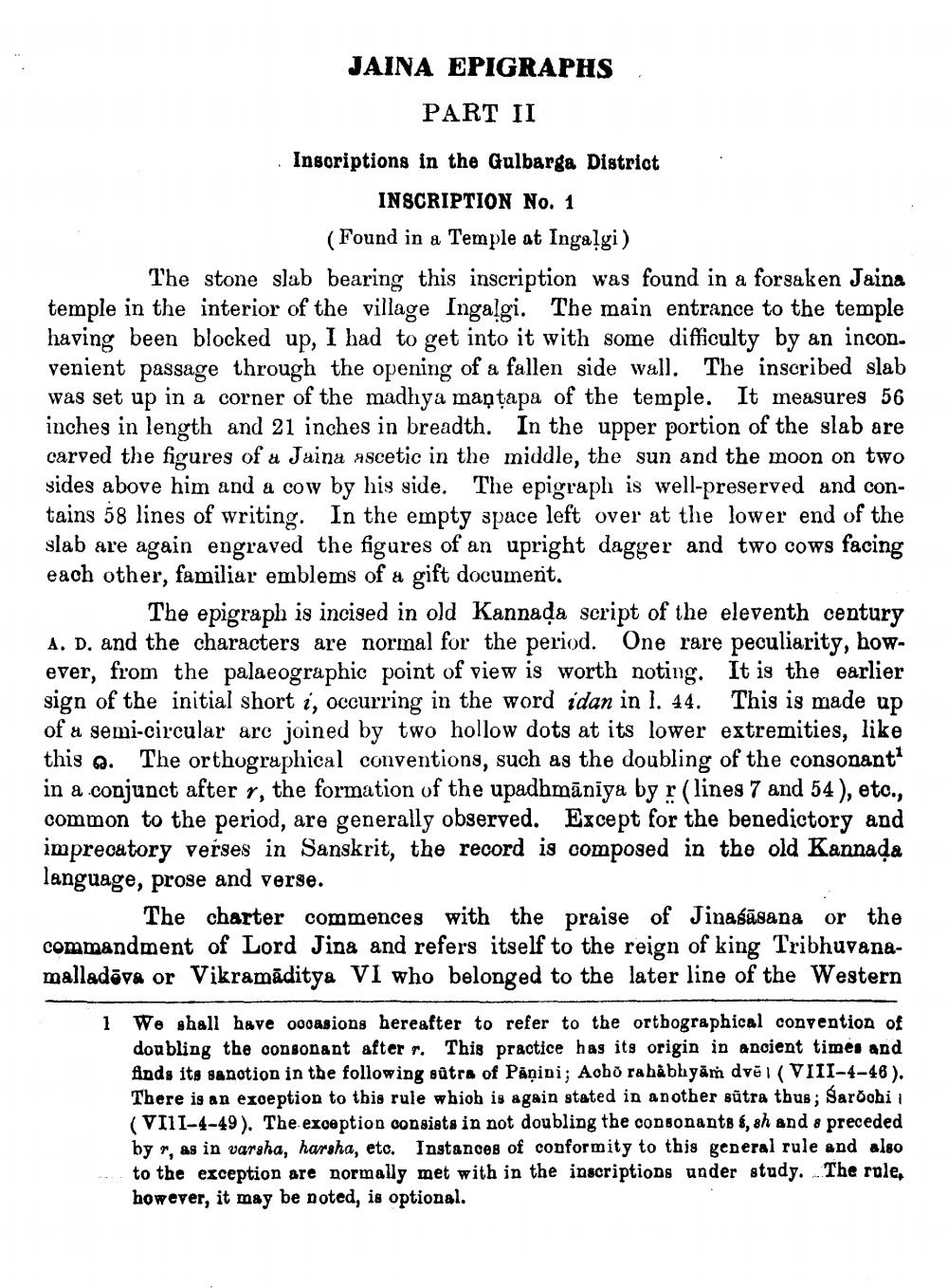________________
JAINA EPIGRAPHS
PART II
Inscriptions in the Gulbarga District
INSCRIPTION No. 1
(Found in a Temple at Ingalgi)
The stone slab bearing this inscription was found in a forsaken Jaina temple in the interior of the village Ingalgi. The main entrance to the temple having been blocked up, I had to get into it with some difficulty by an incon. venient passage through the opening of a fallen side wall. The inscribed slab was set up in a corner of the madhya mantapa of the temple. It measures 56 inches in length and 21 inches in breadth. In the upper portion of the slab are carved the figures of a Jaina ascetic in the middle, the sun and the moon on two sides above him and a cow by his side. The epigraph is well-preserved and contains 58 lines of writing. In the empty space left over at the lower end of the slab are again engraved the figures of an upright dagger and two cows facing each other, familiar emblems of a gift document.
The epigraph is incised in old Kannaḍa script of the eleventh century A. D. and the characters are normal for the period. One rare peculiarity, however, from the palaeographic point of view is worth noting. It is the earlier sign of the initial short i, occurring in the word idan in l. 44. This is made up of a semi-circular are joined by two hollow dots at its lower extremities, like this. The orthographical conventions, such as the doubling of the consonant1 in a conjunct after r, the formation of the upadhmaniya by r (lines 7 and 54), etc., common to the period, are generally observed. Except for the benedictory and imprecatory verses in Sanskrit, the record is composed in the old Kannada language, prose and verse.
The charter commences with the praise of Jinasasana or the commandment of Lord Jina and refers itself to the reign of king Tribhuvanamalladēva or Vikramaditya VI who belonged to the later line of the Western
1 We shall have occasions hereafter to refer to the orthographical convention of doubling the consonant after r. This practice has its origin in ancient times and finds its sanction in the following sutra of Panini; Acho rahābhyām dvě | (VIII-4-46). There is an exception to this rule which is again stated in another sutra thus; Sarochi (VIII-4-49). The exception consists in not doubling the consonants s, sh and s preceded by r, as in varsha, harsha, etc. Instances of conformity to this general rule and also to the exception are normally met with in the inscriptions under study. The rule, however, it may be noted, is optional.




